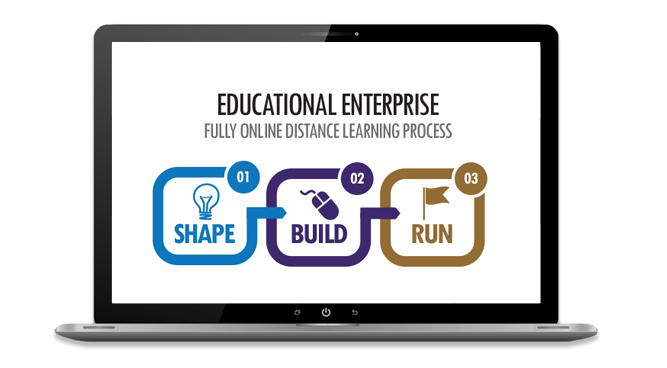Success and Missteps
March 2022 - Samantha Launchbury and Elizabeth Cook
A commitment to continuous improvement is vital to all that we do as we shape and build new fully online courses. Small, timely changes can result in big improvements over time.
We, Educational Enterprise, regularly ask ourselves what is the opportunity, what are the goals, do current processes and activities align with those goals … and if not, how can we get back on track? If an experiment fails, we try to reflect on why it failed and use the lessons learned to improve future endeavours.
Agile, responsive to change
Whilst a sound approach and plan are the backbone of any project, flexibility is also key for continuous improvement. Debriefs and a solid (but agile) communications plan, ensure all stakeholders are informed of changes. We do that by engaging early and often, scheduling regular meetings and timely check-ins. Often the informal check-in between more formal meetings is appropriate to nudge a process in the right direction.
Continuous improvements
Shape, Build, Run
Shape, Build, Run is the proven process that underpins everything we do in Educational Enterprise. We’ve successfully used the approach on all our recent developments, providing step-by-step guidance. Every time we steer a development through the process we learn a huge amount, which informs our next project. We’ve been able to refine Shape, Build, Run and the DL AiP processes to ensure they are transferable across different Colleges, Schools, Programmes, delivery modes, platforms and with external partners.
“For example, we adapted the market research step so that it is more of a collaborative approach, and we’ve honed the business case / financial forecasting step learning from recent projects. We compile new findings and apply those lessons learned at the beginning of each next development.”

Developing new online programmes
EE and Wiley in collaboration with academic and professional services teams have launched three new programmes in the last year. These have been shaped, built, and run throughout the pandemic – the very definition of agility. All three programmes have been hugely successful and reflect trends shown in market research. With each new programme, we are increasing the amount of assets that we can use to inform all our future developments.
As part of the team’s continuous improvement, we are working with colleagues in other departments. We are collaborating with Strategic Change to review processes, and in particular the approach to the ‘Approval-in-Principle’ steps of the ‘Shape’ stage. Strategic Change have interviewed a sample of stakeholders to understand their perspectives and experience of working with the process and the team. Ideas for improvements have been clustered into themes and we are now prioritising solutions and action steps that will be of value for all our future projects.
Sharing best practice
One way of sharing lessons learned amongst wider teams or groups would be to incorporate some best practice and lessons learned work into key meetings. This might be an agenda item, with colleagues taking turns to report on best practice suggestions, or a more impromptu sharing model.
Take away point
Whilst we agree that capturing lessons learned is an on-going effort and a mindset we strongly encourage, we recognise there is more we can all do to document those learnings. Perhaps consider the importance of capturing and storing lessons learned in a repository or on a Team Site so that they can be more easily shared, reviewed, and analysed ahead of new projects. Making sure that capturing lessons learned is more formally part of our process, e.g., baked into Shape, Build, Run.